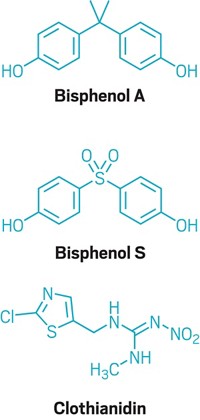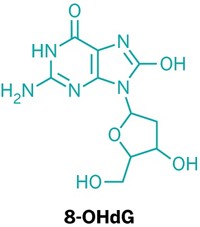Advertisement
Grab your lab coat. Let's get started
Welcome!
Welcome!
Create an account below to get 6 C&EN articles per month, receive newsletters and more - all free.
It seems this is your first time logging in online. Please enter the following information to continue.
As an ACS member you automatically get access to this site. All we need is few more details to create your reading experience.
Not you? Sign in with a different account.
Not you? Sign in with a different account.
ERROR 1
ERROR 1
ERROR 2
ERROR 2
ERROR 2
ERROR 2
ERROR 2
Password and Confirm password must match.
If you have an ACS member number, please enter it here so we can link this account to your membership. (optional)
ERROR 2
ACS values your privacy. By submitting your information, you are gaining access to C&EN and subscribing to our weekly newsletter. We use the information you provide to make your reading experience better, and we will never sell your data to third party members.
Environment
Household Insecticides Appear In Umbilical Cord Blood
Chemical Exposure: The presence of "non-persistent" pesticides suggests that pregnant women experienced recent or chronic exposure
by Quinn Eastman
June 15, 2010

Common household insecticides reached detectable levels in the blood of the majority of babies born at an urban hospital, new research in Environmental Science & Technology (DOI: 10.1021/es1009778) reports.
The researchers studied the "non-persistent" pesticides bendiocarb, propoxur, and permethrin, which are common consumer products for lawns, backyards, and indoor pest control. Because scientists think that they disappear from the human body within a few days, the new finding suggests that the pregnant women received regular, chronic exposure, which may perturb fetal development, or that they were exposed shortly before childbirth -- perhaps even in the hospital, the authors speculate.
The study is one of the first in the U.S. to analyze cord blood, and thus to assess in utero exposure. Previous studies of permethrin, for example, monitored pregnant women who used it to treat scabies or head lice, and assumed fetal exposure without measuring it. The studies found no adverse health consequences for the babies.
Lynn Goldman and her colleagues at Johns Hopkins Bloomberg School of Public Health and the Centers for Disease Control and Prevention analyzed umbilical cord blood from 185 children born at Johns Hopkins Hospital from 2004 to 2005. Using gas chromatography/mass spectrometry the researchers detected the carbamate insecticides bendiocarb and propoxur in 73 and 55 percent of cord blood samples, while they found trans and cis isomers of permethrin in 52 and 41 percent of samples. They also tracked organophosphate pesticides such as chlorpyrifos and diazinon, as well as DDT, chlordane, and their metabolites.
"We can see that they've been exposed, but we don't know if there are health consequences," says first author Gila Neta, an epidemiologist who is now at the National Cancer Institute.
Using principal component analysis, a statistical method to identify pesticides and metabolites that tend to appear together, the authors found that newborns rarely received exposure to both permethrin and carbamates. Permethrin levels were higher among infants of mothers who did not complete high school, possibly because of pest problems in their homes. The authors found higher DDT levels among babies from Asian mothers than from babies with Caucasian mothers. The researchers think that recent DDT use outside the U.S. may explain this result, since a majority of Asian mothers in the study were immigrants.
The results, says Donald Wigle, an epidemiologist at McLaughlin Centre for Population Health Risk Assessment at the University of Ottawa, point to questions that could be resolved by the mammoth National Children's Study. The study, among many other goals, plans to look at pesticide exposure patterns and their possible effects on pregnancy and child health.





Join the conversation
Contact the reporter
Submit a Letter to the Editor for publication
Engage with us on Twitter